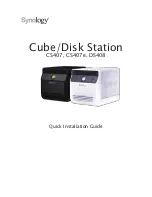
1
Safety information
To avoid bodily injury or damage to the server, read the following information carefully before you
operate the server. In practice, the safety information includes but is not limited to what are
mentioned in this document.
General operating safety
•
Only H3C-authorized personnel or professional engineers can run the device.
•
Place the device on a clean, stable workbench or floor for servicing.
•
Before running the server, make sure that all cables are correctly connected.
•
To cool the server adequately, follow the guidelines below:
Do not block the ventilation holes on the server.
Filler panels must be installed in idle slots of the server, such as drive slots.
Do not run the server if no chassis cover, air duct, or filler panel for idle slots is installed.
•
Keep the server clean and dust-free, and do not place the device in a wet environment or let
liquid flow into the device.
•
Make sure that you move or place the server evenly and slowly.
•
To avoid being burnt, allow the server and its internal modules to cool before touching them.
Electrical safety
To avoid bodily injury or damage to the server, follow these guidelines:
•
Verify whether the operation area has potential risks carefully, such as an ungrounded chassis,
unreliable grounding, or wet floor.
•
Make sure that you disable the power supply before you perform actions in power-off state.
•
Power off the server when installing or removing any components that are not hot swappable.
Battery safety
The server's system board contains a system battery, which is designed with a lifespan of 3 to 5
years.
If the BIOS no longer automatically displays the correct date and time, you might need to replace the
battery. When you replace the battery, follow these safety guidelines:
•
Do not attempt to recharge the battery.
•
Do not expose the battery to a temperature higher than 60°C (140°F).











































